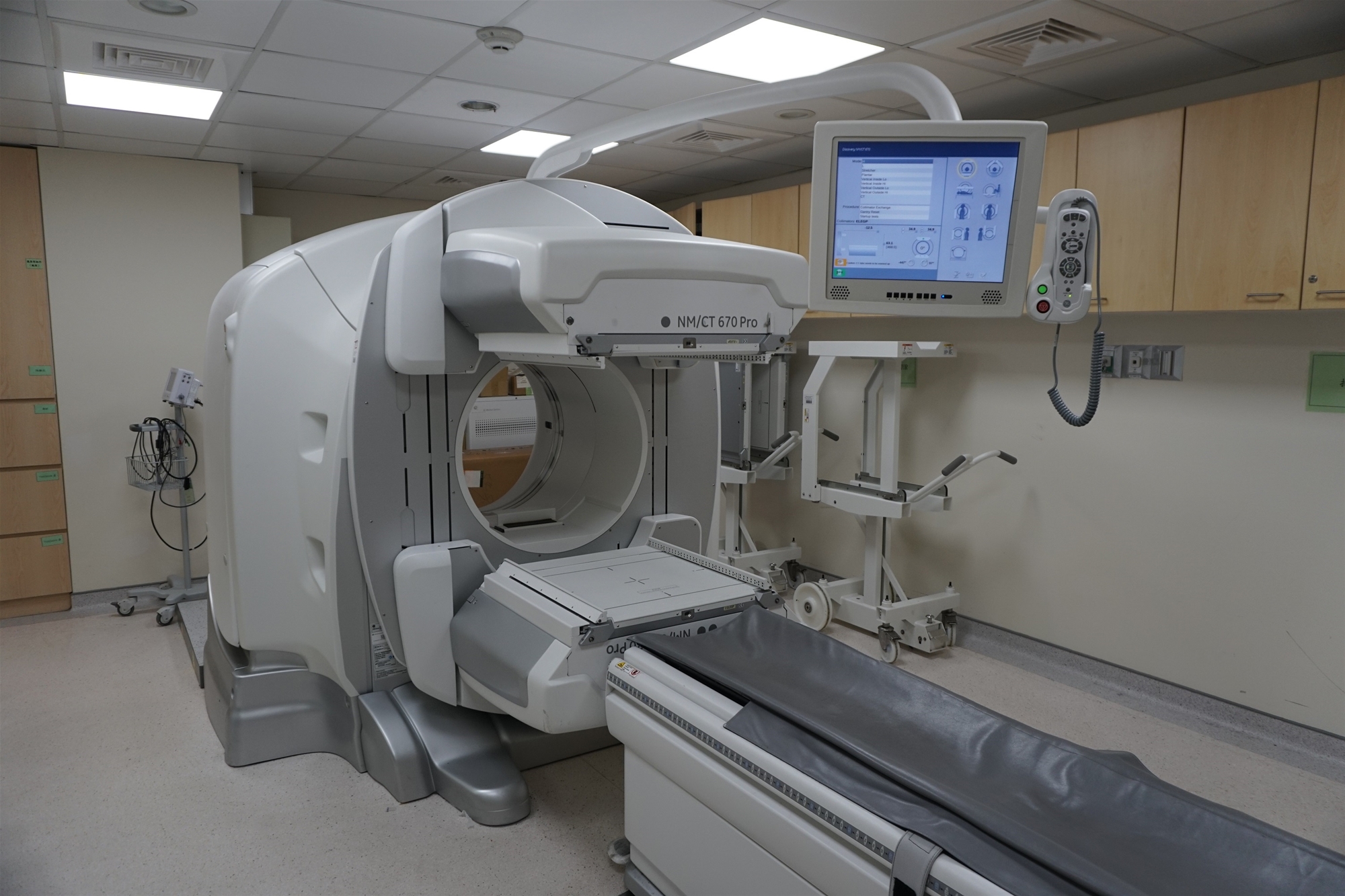If you are arranged for the Nuclear Medicine Sentinel Lymph Node Scintigraphy, the following introduction will help you gain further understanding on the examination.
Main Purpose
- Q : Why do I need this examination?
- A : Sentinel Lymph Node Scintigraphy is only part of the Sentinel Lymph Node Biopsy and the purpose of this scintigraphy is to provide mapping for the biopsy.
- Q : What is Sentinel Lymph Node Biopsy?
- A : This is one surgery that predicts if the neoplastic cells have metastasized to the lymph system, which requires the teamwork from the Department of Surgery, Department of Pathology and the Department of Nuclear Medicine. The purpose is to possibly reduce operational risks while evaluating TNM staging at the same time. The surgery is currently used on some patients of breast tumor or melanoma mostly.
Examination Method
- Q : When do I need to take the exam?
- A : The scintigraphy must be executed prior to the biopsy and in consideration of the decay time of isotope medicine, your attending physician will recommend you to take this scintigraphy on the day of surgery or in the afternoon before the day of surgery at the Department of Nuclear Medicine.
- Q : Is fasting required?
- A : This examination does not require fasting. However, please follow the other fasting maters advised by your attending physician before the surgery.
- Q : Do I need to change clothes?
- A : You will not need to change to the examination gown at the examination. However, the medicine must be administered to the periareolar region via intradermal injection. Patients doing of breast tumor will be required to remove the top before injection. The injection process will be conducted in independent and closed injection room. A screen will also be provided for the protection of y our privacy during the scintigraphy.
- Q : Will the nuclear medicine injected cause allergy?
- A : The medicine injected for this examination belongs to the isotope tracer, which ingredient is gel solution rather than the contrast medium. Currently, there is no study that suggests the medicine used for this examination could lead to allergic reaction.
- Q : Does the injection hurt?
- A : Subcutaneous injection is usually more painful than intravenous injection.
- Q : How will the entire process be implemented?
- A :
- ( 1) The nurse will repeatedly ask you about your information and medical history before the injection in order to protect your medical safety.
- ( 2 ) The technician will arrange for 1 or 2 sessions of scintigraphy in 30 minutes to 2 hours after the injection. Please remain still during the scintigraphy as operational marks may be left on your body during the process.
- ( 3 )The actual scintigraphy time is subject to the instruction provided by the technician that day.
- Q : Where should I go after the scintigraphy?
- A :
- ( 1 ) Scenario 1 : If you take the scintigraphy the day before the biopsy, you may apply for admission with the Hospitalization Center after the completion of examination.
- ( 2 ) Scenario 2 : If you take the scintigraphy on the day of biopsy, we will arrange for our staff to company you back to the ward or the operation room after the scintigraphy. To protect your medical safety, please follow the instructions given by the staff.
Precautions
- Pregnant women may not take the nuclear medicine scintigraphy. Please try to inform the medical staff before the injection if the subject is pregnant.
- The isotope medicine will decay by time and please inform early if the subject intends to change the examination time. Report to the scintigraphy on time to avoid affecting the operation time.
- The isotope medicine is radioactive and the subject should avoid breast feeding within a short period of time.
- The examination merely provide operational mapping and the imaging content could not be used for diagnosis of disease. The examination medicine will not cause discomfort in you. Please remain relaxed.
- Do not wash off the operational marks left on your body after the completion of examination.


